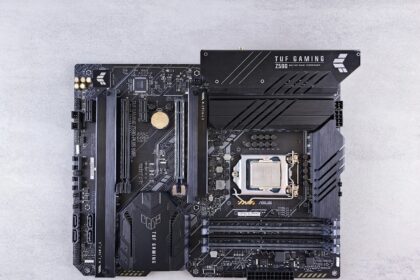Facing a blank white display that blocks the login menu means your computer has hit a severe startup problem. The operating system fails to load and you see only a blank, white area with no interface. This guide explains why that happens and what you can try first.
Common triggers include malware, faulty or outdated graphics drivers, conflicts from external devices, buggy updates, missing system files, background apps, and hardware failures. We contrast this blank view with other errors so you know the system state.
Start with quick checks: power the PC off, disconnect from the internet, wait at least 30 seconds, remove all peripherals, then restart. From there, follow targeted software steps, use recovery tools, or check hardware if needed.
Some actions work from safe mode or via Device Manager and Update & Security controls. Many cases resolve with clear, methodical steps, and the guide will help protect data and restore normal operation.
White Screen of Death on Windows Explained
A plain white screen may signal that core display services failed before the user interface loaded.
What you see: the monitor lights but shows a blank white field that blocks the login menu and desktop. There is usually no error code or on-screen controls, which makes recovery harder than with a blue screen event.
Why the operating system fails to draw the interface: critical graphics components or the shell may not initialize. The login elements and desktop never render when the graphics stack or user session stalls.
Visual cues include a lit display that responds to power but no cursor, icons, or system text. That suggests Windows processes tied to the GPU or session launch are stuck or crashed.
- Common triggers: faulty display or graphics driver, recent update issues, external device conflicts, malware, missing system files, or background apps.
- Behaviors: looks like a frozen computer but reflects deeper system initialization or display pipeline faults.
- Recovery note: unlike a blue screen that may reboot with diagnostic data, this error often needs manual action via the power button or specific key sequences.
Next steps: we will isolate peripherals and test drivers to restore normal start and access settings once the display returns.
| Symptom | Likely Cause | Immediate Action |
|---|---|---|
| Blank white panel, no text | Graphics driver crash or shell failure | Force restart, try Safe Mode |
| White after update | Problematic system patch | Boot to recovery and uninstall update |
| White with external device attached | Peripheral conflict at startup | Disconnect devices, restart, reintroduce one by one |
Common Causes of the White Screen on Windows 10/11
A blank display at boot usually points to specific driver or hardware problems. Below are frequent causes and what they imply for recovery.
Graphics and display driver issues
Outdated, corrupt, or incompatible graphics drivers can stop the desktop from rendering. That leaves a persistent white screen until the driver is updated, rolled back, or reinstalled via Device Manager.
External devices and peripheral conflicts
USB drives, external HDDs, docks, hubs, and some keyboards can create boot conflicts. Removing all devices, then adding them back one at a time helps isolate the faulty device.
Buggy or failed Windows updates
Some updates introduce regressions that break the graphics stack or session launch. Check update history and uninstall recent patches if the issue began after an update.
Malware, missing system files, and background apps
Malware can hijack startup processes. Corrupt system files or apps that run at boot may block the interface. Run scans and use selective startup to narrow the culprit.
Hardware failures and component problems
Failing GPUs, bad RAM, storage faults, or power issues can trigger a white screen under load or at start. Use built-in diagnostics and note any recent hardware changes.
- Tip: Correlate symptoms with recent drivers, devices, or updates to find the true cause quickly.
| Symptom | Likely cause | Next action |
|---|---|---|
| White at boot after driver install | Graphics driver | Roll back via Device Manager |
| White with peripheral attached | Device conflict | Disconnect and retest |
| White after patch | Failed update | Uninstall recent update |
Quick Fixes to Try First
Begin with a few fast checks that often clear a stalled boot. These first-line fixes are safe and quick. Try them before deeper troubleshooting.
Force restart using the power button
Hold the power button for about 10 seconds until the screen goes dark. This force restart cuts power to hung processes and can restore control when the interface is frozen.
Disconnect from the internet and wait
Unplug network cables or disable Wi‑Fi, then wait at least 30 seconds before pressing the power key again. That pause prevents online services or pending updates from re-triggering the same stalled state on start.
Remove external devices and reintroduce one at a time
Detach all USB drives, external disks, docks, hubs, and accessories. Restart the system with no devices attached.
- If the boot completes, reconnect each device one by one.
- Note which accessory brings back the blank display or causes errors.
- Replace, update drivers for, or avoid the offending device when identified.
Repeat the cycle once if needed. If the white screen or screen death returns after these checks, the issue likely needs driver or update work next.
| Action | Timing | Expected result |
|---|---|---|
| Force restart | 10 seconds hold | Clears hung processes; system restarts |
| Disconnect network | 30 seconds wait | Stops online services that may stall start |
| Remove devices | Immediate; reconnect slowly | Find conflicting accessory |
What Is a White Screen of Death? How to Fix It on Windows
Begin with a trimmed boot. Starting in safe mode loads only essential services and drivers. If the blank display clears there, this strongly points at third‑party software or a faulty driver.
Use device manager for graphics support
Open Device Manager, expand Display adapters, right‑click the GPU and select Update driver. If the problem began after a recent change, choose Roll Back driver or uninstall and reinstall the package.
Check system updates and remove bad patches
Go to Start > Settings > Update & Security > Windows Update, then Check for updates. Install stability patches that target graphics and shell reliability.
Uninstall recent updates that match the fault
If the issue started after an update, open View update history > Uninstall updates. Remove the suspect patch, restart, and test in normal mode.
- Reinstall the graphics driver if updates or rollback fail: fully remove current drivers, then install the stable vendor release.
- Use keyboard keys if the GUI is partial; safe mode gives a clean environment for these steps.
- After major changes, perform a brief force restart so all components reload cleanly.
| Action | Where | Aftercare |
|---|---|---|
| Start in safe mode | Advanced startup or Recovery | Check if white screen disappears |
| Update or roll back driver | Device Manager > Display adapters | Test boot after change |
| Install stability updates | Settings > Update & Security | Reboot and observe behavior |
| Uninstall recent patch | View update history > Uninstall updates | Document removed update for records |
Advanced Recovery and System Restore Options
When basic repairs fail, a targeted rollback often restores a working environment without a full reset. When the display error persists after quick fixes, a restore point can roll the computer back safely to an earlier time.
Using a restore point returns the operating system to a prior stable configuration. This can undo recent updates, driver installs, or software that caused the white screen or related startup error.
Use a restore point to revert the operating system
Boot into Safe Mode or the Recovery Environment and run System Restore. Pick a restore point dated before the problem began. The operation reverts drivers, settings, and installed updates that may trigger the screen death.
Protect and recover files before restoring
If abrupt shutdowns or repeated boot failures risk data loss, copy critical documents and media first. Restoring may remove items added after the chosen restore point.
- Choose a restore point that predates the issue and run the restore from Safe Mode or WinRE.
- Confirm system stability after restart.
- Reapply updates or drivers slowly and document changes to spot the cause if the white screen returns.
| Action | Where | Result |
|---|---|---|
| Run System Restore | Safe Mode / Recovery | Rolls back to prior state |
| Backup files first | External drive or cloud | Protects data before rollback |
| No restore points | Advanced options | Try Startup Repair or repair install |
Hardware and Health Checks on Windows
Use built‑in diagnostics to verify whether components are healthy. Start here when a persistent white screen or random freezes suggest a physical fault. These checks help separate software from hardware problems quickly.
Run built-in performance, memory, and device diagnostics
Open Windows Security and select Device performance & health for a quick status report. Next, run Performance Monitor to watch CPU, disk, and thermal metrics during boot or testing.
Use Windows Memory Diagnostic: reboot and choose the test to scan RAM for errors. Memory faults often cause unpredictable startup behavior and intermittent white screen events.
Identify failing components and when to contact authorized support
Open Device Manager and scan for warning icons. Review device properties for error codes and test updating or rolling back the graphics or storage driver as needed.
- Visually inspect cables, fans, and component seating in desktops if safe to do so.
- Swap the display cable or try another GPU port to rule out a simple display path problem.
- Document test results, error codes, and steps taken for faster support triage.
| Check | Tool | When to seek support |
|---|---|---|
| Memory stability | Windows Memory Diagnostic | Repeat errors or failed tests |
| System health | Device performance & health / Performance Monitor | Persistent alerts or thermal spikes |
| Device status | Device Manager | Warning icons after clean driver installs |
If diagnostics report failing hardware — GPU, RAM, or storage — contact authorized support. Also reach out when the problem repeats under load or after clean restores. Proper documentation speeds repair and reduces guesswork.
Conclusion
A short power off, network disconnect, and device removal often clears startup stalls quickly.
Recap: power cycle the computer, unplug networking, and remove peripherals to rule out quick conflicts that stop the screen from rendering.
Next, boot in Safe Mode and use settings to review recent updates. Open Device Manager to update driver packages, roll back graphic changes, or run an update driver where needed. Re-test after each step.
If the issue began after a patch, uninstall that update or use a restore point to return the system to a known good state. Then apply updates and drivers slowly and document changes.
Aftercare: keep graphics drivers and updates current, monitor for repeat issues, run diagnostics if problems persist, and contact authorized support when hardware warnings appear. Most cases respond to these fixes and solutions, helping the display and operating system return to normal.
FAQ
What does the white screen look like and how does it differ from a blue screen?
A white screen shows a blank, bright display with little or no text or error code, unlike the Windows blue screen that displays a stop code and diagnostic info. The white appearance usually means the display is working but the operating system or graphics stack failed to render the desktop or login UI.
Why won’t the operating system or login menu appear when the display turns white?
The login menu and OS may not load because the graphics driver crashed, a critical system file is missing, or a startup process is blocked. Corrupt updates or malware can also stop the shell from initializing, leaving the screen blank despite power and display signals.
Can graphics or display drivers cause a white screen?
Yes. Faulty, outdated, or incompatible graphics drivers commonly cause rendering failures that result in a white screen. Driver conflicts after an update or a bad GPU driver install can prevent Windows from drawing the desktop.
Could external devices or peripherals trigger the issue?
Yes. USB drives, external monitors, docks, and other peripherals can create conflicts during startup. A faulty or incompatible device may block the boot process or interfere with display detection.
Do Windows updates sometimes cause a white screen?
They can. Buggy or incomplete Windows updates may replace system files or drivers incorrectly and trigger a white-screen error. Rolling back a recent update often restores a working state.
Might malware, missing system files, or background apps be the cause?
Absolutely. Malware can corrupt system files or drivers, and required system files that go missing prevent the shell from loading. Background apps that hook into the display stack can also cause conflicts at boot.
How do hardware failures lead to a blank white display?
Failing graphics cards, loose display cables, or a damaged screen can produce a solid white output. Power issues and defective motherboard components may also stop Windows from initializing properly.
What’s the first quick fix I should try?
Force a restart by holding the power button for 10–15 seconds until the device shuts off, then power it back on. This clears transient crashes and often restores normal startup.
Should I disconnect from the internet before rebooting?
If you suspect a bad update or remote attack, disconnect Ethernet and Wi‑Fi by unplugging or using hardware switches. That helps prevent remote changes during troubleshooting and can allow a clean restart.
How do I test if a peripheral causes the problem?
Remove all external devices—USB drives, printers, external GPUs, and docks—then boot with just keyboard and mouse. Reconnect devices one at a time to find the culprit.
How do I start Windows in Safe Mode to isolate driver or software issues?
If you can’t reach the login screen, force three failed boots to trigger Windows Recovery Environment, then go to Troubleshoot → Advanced options → Startup Settings → Restart and choose Safe Mode. In Safe Mode, minimal drivers load so you can uninstall problem software or drivers.
How do I update, roll back, or reinstall graphics drivers using Device Manager?
In Safe Mode or after booting normally, open Device Manager, expand Display adapters, right‑click the GPU, and choose Update driver or Properties → Driver → Roll Back Driver. To reinstall, uninstall the device and reboot so Windows reinstalls a default driver, or download the latest driver from NVIDIA, AMD, or Intel.
What if a pending Windows update caused the white screen?
Boot into Safe Mode or Recovery Environment and remove the update under Troubleshoot → Advanced options → Uninstall Updates. Then check Windows Update settings and install only verified stability patches.
How can I use a restore point to revert the system?
Access System Restore from the Recovery Environment or Safe Mode (Control Panel → Recovery → Open System Restore). Choose a restore point dated before the issue, then follow prompts to revert system files and settings without erasing personal files.
How do I protect and recover files if the white screen caused data loss?
Boot from Windows installation media or a recovery USB to access Command Prompt or File Explorer and copy files to an external drive. You can also connect the drive to another PC or use a Linux live USB to recover data before attempting repairs.
What built-in diagnostics can check memory, storage, and devices for hardware faults?
Run Windows Memory Diagnostic for RAM, use chkdsk for disk checks, and use built‑in OEM diagnostics or tools like Intel Processor Diagnostic and manufacturer hardware tests to scan components.
How do I identify failing components and when should I contact support?
If diagnostics show errors, or if replacing drivers and recovery steps fail, the GPU, display panel, SSD/HDD, or motherboard may be at fault. Contact Microsoft Support, Dell, HP, Lenovo, or your PC maker’s authorized service if hardware replacement or repair is needed.























